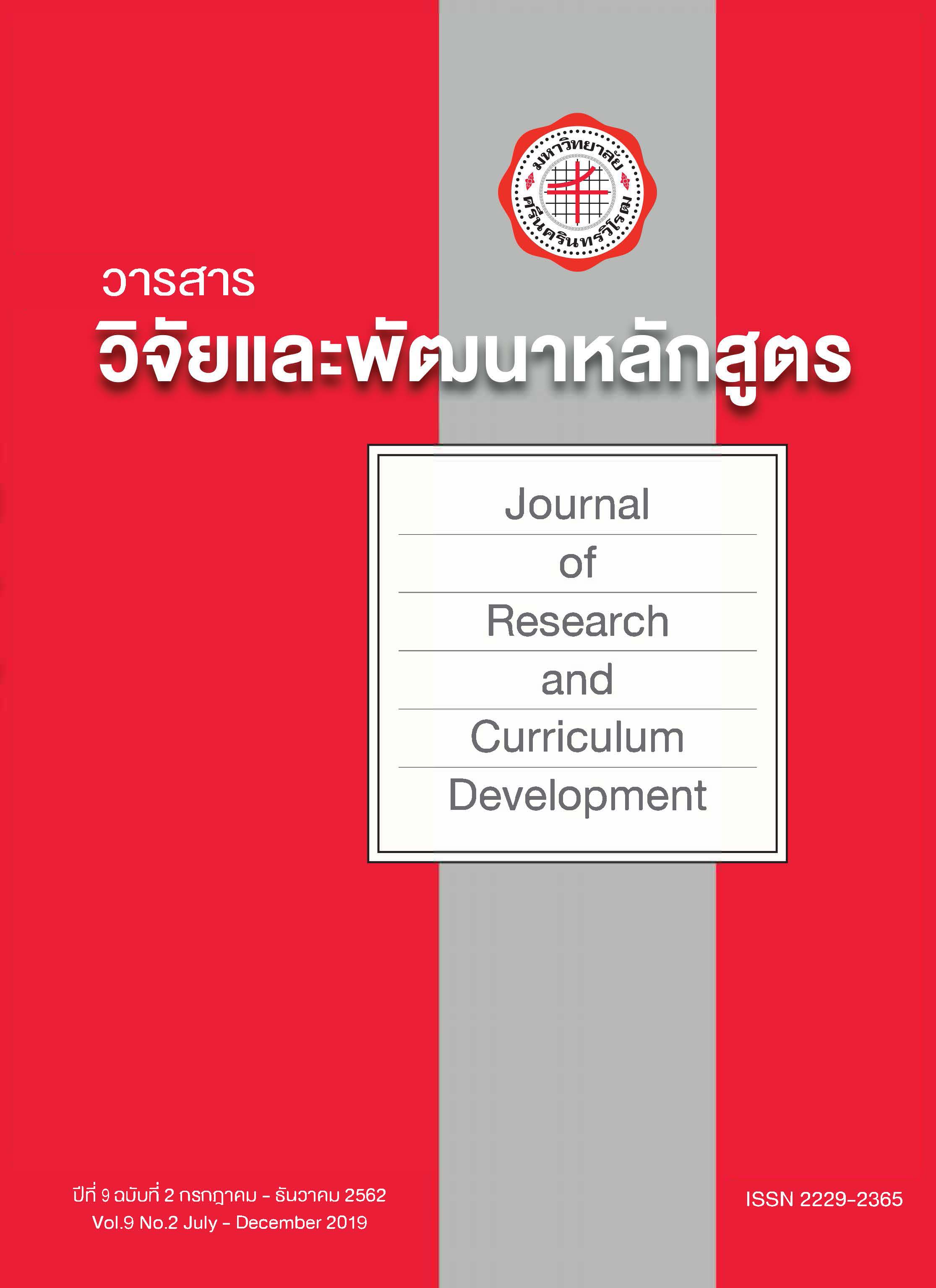การพัฒนารูปแบบการประเมินสมรรถนะการปฏิบัติการพยาบาลในห้องคลอดสำหรับนักศึกษาพยาบาลหลักสูตรพยาบาลศาสตรบัณฑิตโดยการประยุกต์ใช้ศูนย์การประเมิน
Keywords:
competency, nursing practice, labor room, nursing student, assessment centerAbstract
This research study was pilot study focusing on: 1) developing a model of nursing practice competency assessment in labor room for nursing students by using an application of assessment center; 2) Studying the result of nursing practice competency assessment in labor room for nursing students by using an application of assessment center. The sample consisted of 3 persons was faculty member of nursing and 12 persons was nursing student in Bachelor of Nursing Science Program from a faculty of nursing in Bangkok that is accredited by Thailand Nursing and Midwifery Council for 5 years and by inclusion criteria. Research instruments were: 1) a model of nursing practice competency assessment in labor room for nursing students by using an application of Assessment Center; 2) a handbook for the model of nursing practice competency assessment in labor room; 3) simulation; 4) nursing record; 5) nursing performance evaluation form; and 6) a knowledge test. The findings revealed that time of nursing practice competency assessment in assessment center, the station for admit and nursing record used the highest time (= 16.25, SD = 3.72). Time of summary scores, the station for delivery baby, delivery of the placenta, and nursing record used the highest time (
= 3.25, SD = .45). Time of feedback, the station for delivery baby, delivery of the placenta, and nursing record used the highest time (
= 4.17, SD = .58). Nursing student had the highest skill, behavior and nursing record score for placenta assessment (
= 25, SD = 1.04). Skill and behavior score and knowledge score were not correlation significant differences in statistical at .05.
References
2. ยุวดี วัฒนานนท์, วาสนา จิติมา, และวชิรา วรรณสถิตย์. (2553). ความสัมพันธ์ระหว่างปัจจัยด้านความพร้อมของนักศึกษาพยาบาลก่อนฝึกภาคปฏิบัติในหน่วยห้องคลอด กับ คะแนนผลสัมฤทธิ์ของการปฏิบัติพยาบาลผู้คลอดปกติในระยะคลอด. วารสารพยาบาลศาสตร์, 28 (4), 67-73.
3. ยุวดี วัฒนานนท์, ทัศนีย์วรรณ พฤกษาเมธานันท์, กันยรักษ์ เงยเจริญ, วชิรา วรรณสถิตย์, วาสนา จิติมา, และพุทธิราภรณ์ หังสวนัส. (2559). ผลการเรียนรู้จากการใช้รูปแบบการสอนภาคปฏิบัติตามแนวคิดของดี เชคโค: การทำคลอดปกติ. วารสารพยาบาลศาสตร์, 34 (3), 19-29.
4. สายลม เกิดประเสริฐ, และศรีสมร ภูมนสกุล. (2556). ความคิดเห็นของนักศึกษาพยาบาล อาจารย์พยาบาล ต่อการเรียนการสอนในห้องฝึกปฏิบัติทักษะทางการผดุงครรภ์ก่อนขึ้นฝึกปฏิบัติในห้องคลอด. รามาธิบดีพยาบาลสาร, 19 (3), 400-415.
5. สุมาลี จูมทอง, ดุษฎี ใยเหลา , งามตา วนินทานนท์, และสชญ ภู่คง. (2552). ประสบการณ์ความเครียดและวิธีการเผชิญความเครียดของนักศึกษาพยาบาลจากการเรียนภาคปฏิบัติในห้องคลอด. วารสารพฤติกรรมศาสตร์, 15, 39-56.
6. Blackman, I., Hall, M., & Darmawan, I. G. N. (2007). Undergraduate nurse variables that predict academic achievement and clinical competence in nursing. Int Educ J, 8 (2), 222-236.
7. Cunningham, F. G., et al. (2018). Williams obstetrics (25th ed.). New York: McGraw-Hill.
8. International Task Force on Assessment Center Guidelines. (2015). Guidelines and ethical considerations for assessment center operations. Journal of Management, 41, 1244-1273.
9. Rotthoff, T., Ostapczuk, M. S., Kroncke, K. D., Zimmerhofer, A., Decking, U., Schneider, M., & Ritz-Iimme, S. (2014). Criterion validity of a competency-based assessment center in medical education a 4-year follow-up study. Med Educ Online, 19, 1-10.
10. Smart. J. R., Kranz, K., Carmona, F., Lindner, T. W., & Newton, A. (2015). Does real-time objective feedback and competition improve performance and quality in manikin CPR training – a prospective observational study from several European EMS. Scandinavian Journal of Trauma, Resuscitation and Emergency Medicine, 23, 1-11.
11. Thornton, G. C., & Rupp, D. E. (2006). Assessment centers in human resources management: Strategies for prediction, diagnosis, and development. New York, NY: Psychology Press.
12. World Health Organization, International Confederation of Midwives, & International Federation of Obstetricians and Gynecologists. (2004). Making pregnancy safer: The critical role of the skilled attendant. A joint statement by WHO, ICM and FIGO. Geneva: Department of Reproductive Health and Research.





